Who says educational marketing can't be exciting? You can capture the interest of students with compelling marketing when it's implemented tactfully.
To attract prospective students to study with you or inspire your existing population, these are our favourite and easily implementable ways to bring your education campaign to life.
- Meet students where they're most comfortable
- Bespoke learning resources
- Use students as brand ambassadors
- Engaging character creation
- Chatbots over phone calls
- Branded website design
- Fun and games
- Education animated videos
1. Meet students where they're most comfortable
One of the reasons it can be difficult to engage students is because they're forced to use software they either aren't comfortable with (or just want to keep using the apps they love). That's why you should try to meet them where they're most comfortable.
Let's face it. Today's students love social media - so why not utilise platforms they're active on already, rather than trying to get them to adopt something new? Entice them to get involved and grab their attention by using apps like Snapchat and TikTok and really take your educational campaigns up a level.
Who wouldn't want to see their dream university on their TikTok for you page?
2. Bespoke learning resources
Designing your own learning resources gives you the opportunity to create guides, ebooks and teaching tools that will help you achieve your final goal.
On a daily basis, students of all ages learn from a combination of screens and textbooks. Providing your students with bespoke printed or online resources allows you to have complete say over what the materials include. This is a great way to tailor how your students learn and create resources that best suit their learning style and interests as a wider class.
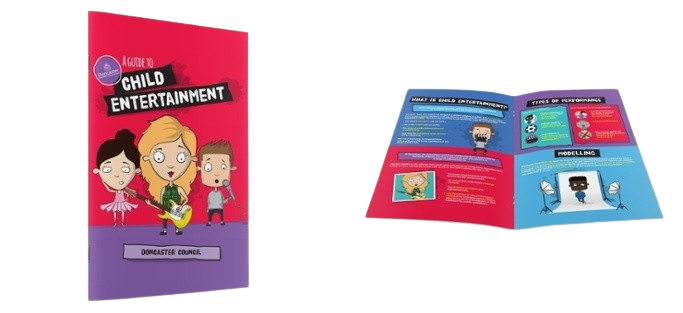
Online bespoke resources can be accessed anywhere, with no need to worry about them becoming lost at home or crumpled beyond use in book bags. Printed resources ensure students get much-needed time away from their screens and aren’t tempted by distractions, like apps, social media, games or other notifications.
Some ideas include:
- Leaflets explaining the importance of submitting homework or coursework on time
- Digital posters related to the curriculum
- Infographics explaining why students must respect each other
- Ebooks for prospective students looking to learn more about your educational institution
You might think bespoke resources won't have a big impact, but if they're designed to be engaging for students, they have the potential to make a difference. Creative, bespoke workbooks can have games, revision hacks and quizzes that encourage students to work, play and learn, all at the same time.
3. Use students as brand ambassadors
Whether it's the current crop of students or those you taught before, have them become brand ambassadors and offer something different as part of your educational campaigns.
The dream would be for students to listen to teachers all the time, but they might be more likely to pay even more attention when they hear from somebody like themselves and feel more engaged.
This is something we did with Newcastle University. We sat down with some of their international students and filmed interviews with them where they were shouting about the institution. Try doing the same and tweak the messaging to make it more focused around your intended purpose.
4. Engaging character creation
Fun, illustrated characters have the potential to have a big impact on students. You just need to think about their favourite characters in films and television series.
By creating a fun superhero, you can create an educational campaign to engage students.
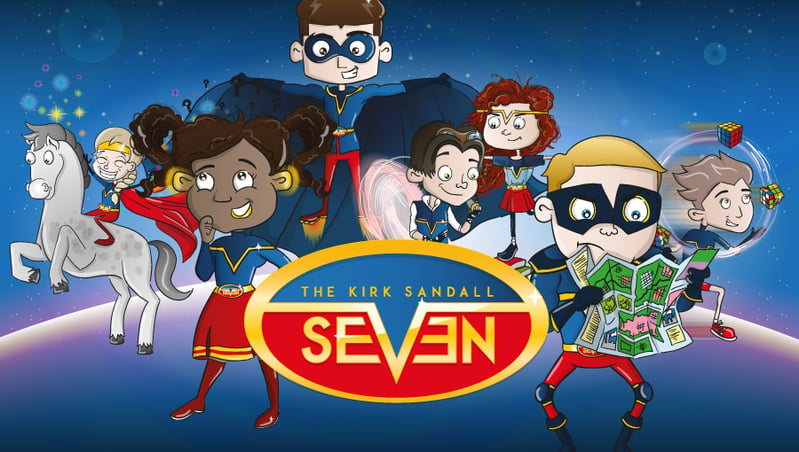
Not only will students be more engaged with your teaching, they’ll also find it more memorable. Creating bespoke characters makes your educational campaign stand out and have a real voice. Think of your new characters as the spokesperson or mascot of your campaign.
5. Chatbots over phone calls
The younger generation prefer instant answers and not having to speak to a human. They don't like tedious phone calls where they're sent from person to person. If you're trying to give more information on a course or module, for instance, then you'll probably lose them.
Why not implement chatbots? It'll allow you to hook potential students by signposting them to relevant information to the course they want to pursue. You can even combine the other techniques here. Rather than sending them to endless blocks of text, send them digital content, videos, infographics and more.
6. Branded website design
A lot of students use the internet as a teaching resource, especially now. When it comes to revision season, many of your students will likely use the internet to help them prepare for exams.
So having a branded and customised website could be very beneficial to your campaign.
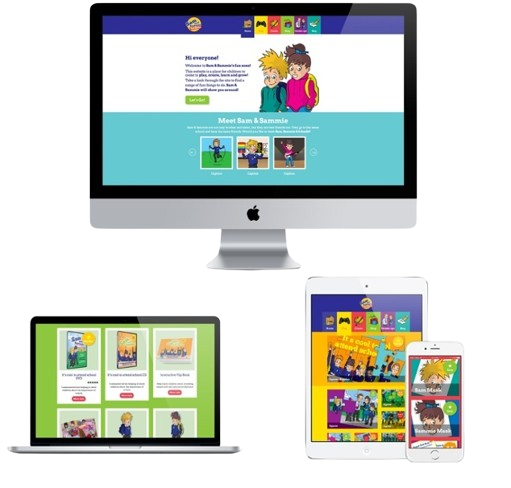
As 2020 taught many schools, a website can be a valuable source of learning resources, games, videos and other helpful material to assist in spreading your message.
When we created a Sam & Sammie website to help teach students the importance of going to school and being on time, we designed games and videos for children to play. We also created learning resources for parents and teachers to use too.
7. Fun and games
Online games are excellent ways for students to get involved in interactive learning. Think about GCSE Bitesize - their maths games and science quizzes are so valuable.
Creating engaging games encourages students to have fun, but also to learn important lessons. Games keep students focused and introduce them to information they need to learn in a memorable way but doesn’t feel like traditional learning.
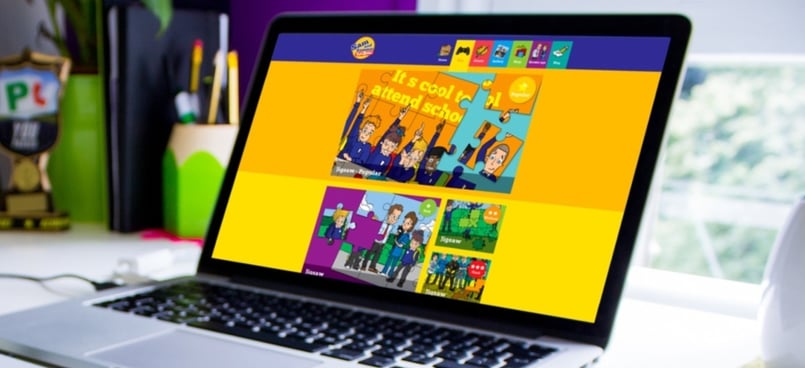
However, these don't just have to be games they play online. Having interactive games in the classroom can benefit teaching too.
8. Educational animated videos
Video and animation can be one of the best ways to learn. It requires little effort by the learner, and by simply watching a 3-5 minute video, they can remember important information. Studies actually show viewers retain 95% of a message through video, so videos are proven to be more effective and memorable.
Animations in particular are excellent for students of all ages. Why? Because you have the freedom to be as creative as you want to be. You can use them to incorporate your characters from our second tip, too!
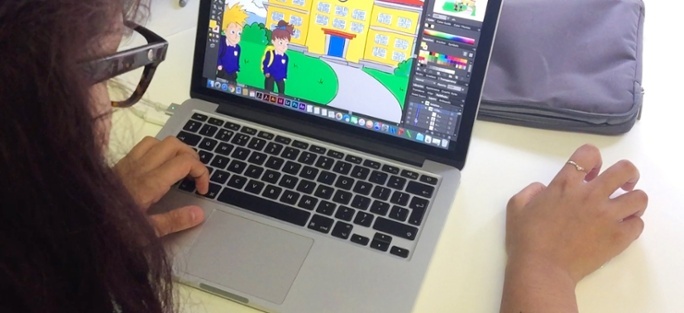
Educational animated videos are great teaching tools that can be used in assemblies, classrooms and put on the school website. They're perfect for bringing all your ideas to life.
In today’s world, everything is constantly changing and evolving. The same is true in the world of education and in marketing. To help you engage your students and bring your education campaign to life in the contemporary classroom, we have some fresh new tips and insights.
What's your campaign?
Any campaign must start with knowing your end goal. So, what's your objective? What do you want your campaign to achieve?
While you can use the tips above for most educational campaigns, it's important to define and understand your goals so you can choose the best approach for you.
Some common educational campaigns within schools aim to get students to:
- Study with us
- Be on time for class
- Treat online classroom the same as a school classroom
- Encourage good behaviour
- Respect other classmates
- Remember to complete homework on time
- Go to bed early
- Get physical activity
- Improve attendance (we used Sam & Sammie characters to help a school improve attendance and punctuality. It ended up being rolled out across the borough!)
Once you know what your end goal is, you can choose what's best to help bring your educational campaign to life. The techniques above can help your teaching have an even greater impact on your students.
The new not-so-basics: Marketing in education
In 2014, when inbound was still a relatively new concept, we wrote an guide on the secrets of inbound marketing. A lot has changed since then, so we've created a shiny new inbound guide that's bigger and better than before.
Aimed at helping universities harness the power of inbound, it has everything you need to know about how inbound works and why it works so well.
Want to make sure you get these valuable insights? Hit the button below to grab your copy.
Real Growth. Real Impact.
Design vs Designer - Episode 05
Vs Content Round 2 | Design Vs Podcast Ep04
DESIGN VS: Content | Ep03
DESIGN VS: Creativity
Digital 22 Wins a Bunch of HubSpot Impact Awards
HubSpot Graphic Design Impact Award WINNER: How We Used Animated Video to Explain a Client's Abstract Product
See why enterprises choose Avidly
Let’s build your HubSpot success story
Compelling final call to action - with accompanying link to Contact page









